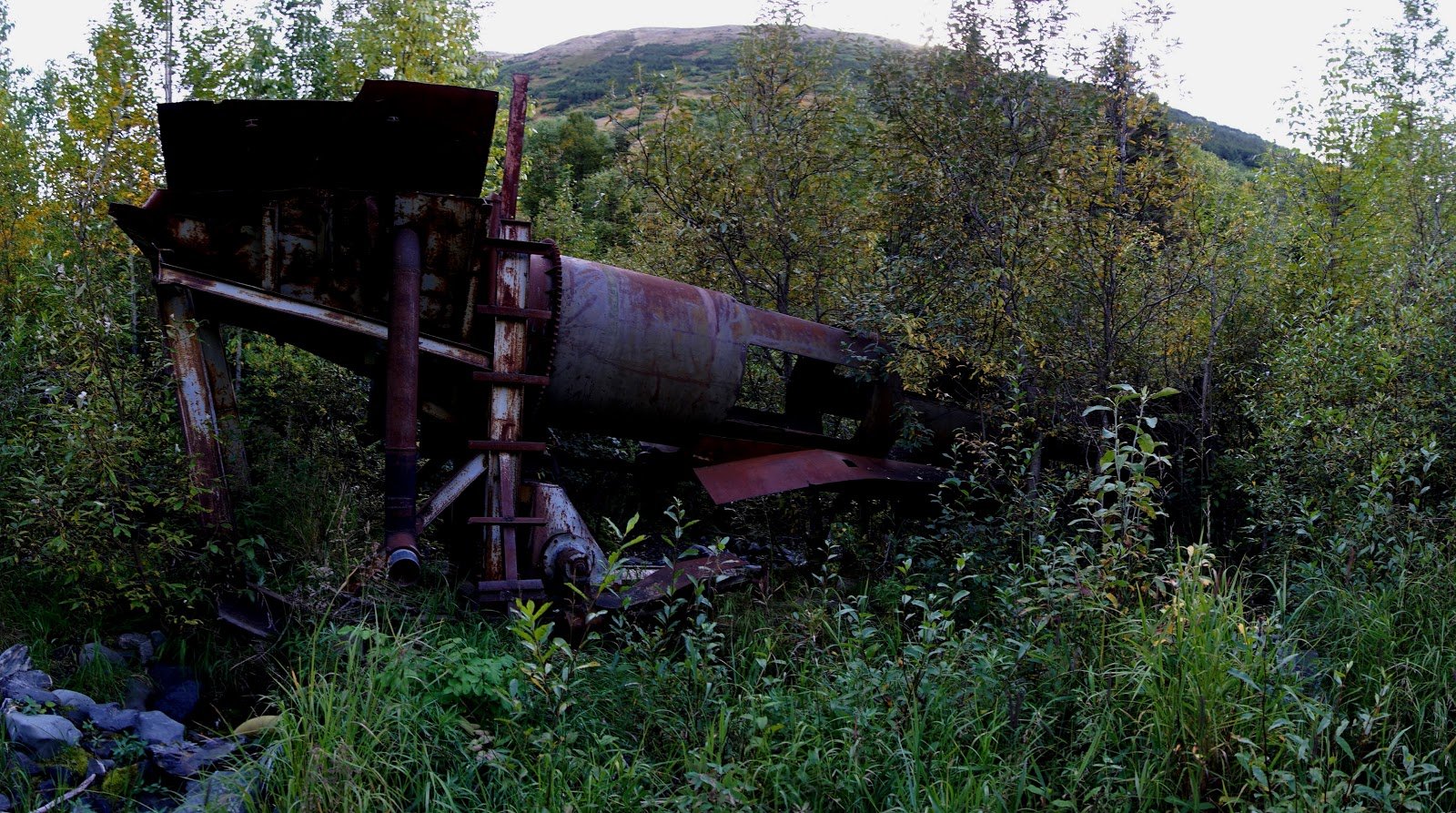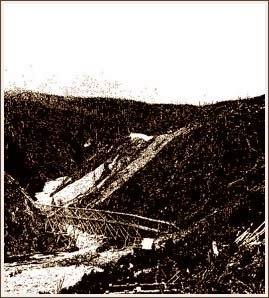By Shawn R. Lyons
Though one can’t see them, one can sense the ghosts around Manitoba Cabin. One can sometimes feel them pausing to scratch in the soil with a boot, turning to listen to the rustling of wind in the woods, or just sitting with slumped shoulders on a stump after a tiring day working sluice boxes in Mills Creek. But mostly they seem to just wander in the woods about the cabin, flitting, aimless shadows looking for something, but not sure what. From the mining days of yore, they can’t seem to let go of the place where they worked and lived and sometimes died, where they swatted at mosquitoes and scatted away bears in the heat of summer, hunted moose through in the hills in autumn, and repaired tools by their black-hot stoves in the cold of winter.
In the first hours of morning, before the first bird songs ring through the trees, one thinks they hear the clanging of a shovel on rock in the hollow just below the cabin. In the last lingering moments of twilight one thinks they see a shadow on the trail shouldering a shovel. But maybe one only hears the water tumbling rocks in the creek or sees a branch’s shadow shivering in the gloaming. One just doesn’t know. Most would just shrug off such incidents and deny the existence of ghosts.

Lauritsen Cabin (c. 1898): One of the first cabins in the Canyon Creek drainage area
But any who visits the place cannot deny that history does haunt these woods. The old equipment and cabins scattered in the hills and piles of moved earth and rock along the creeks bear witness to that history. The numbers of people that lived and mined the surrounding creeks below and mountains above numbered close to two thousand. Of these, a total of 327 miners worked just in the gravel along Canyon Creek. This would’ve made for a very high-density of miners in the 11-mile length of the creek—an average of approximately 30 miners per mile, close to one every 50 yards. Most of these miners remain largely nameless, nameless, but some have left vivid images behind: Polly Renner calling after her pet parrot, Oscar Plowman and Bud Tolson bending over the blasting of a hydraulic nozzle, Ed Estes coaxing his dog team through a February storm along the old trail from Sunrise, and Gentry Schuster leaning against the door frame of the ski hut he built just below tree line on Little Manitoba Mountain. Other more indistinct shadows left the steam-shovel in the ditch on the lower flank of Fresno Peak to the west, cut the road up to Raven Ridge to the east, and pushed ore into the grinder rusting in a clearing alongside Canyon Creek a mile to the north.

A grinder abandoned in a man-made channel along upper Mills Creek 4 miles from the Seward Highway
One enters into this history every time one walks down from the highway to spend a winter day skiing on Manitoba Mountain or spend a summer night sleeping in Manitoba Cabin. Even if you don’t know it, just by arriving at this place you enter history. Come here enough and you too, in time, will melt into another wandering ghost in the history of this place.
Blue Gulch, dug by Robert Michaelson, extends right outside Manitoba Cabin, just below the far side of the trail leading up from Mills Creek and extends for over a mile back up an alder-clogged channel back toward the confluence of Mills Creek and Juneau Creek. Its waters still ooze in Mills Creek down by where one gets water. His cabin stood in a clearing just across the same trail up near the sauna. The road he and John Renner blazed up to their claim at that confluence begins as a brushy cut in the trees just beyond the cabin.
A few years later hydraulic mining came to the area. A ditch to carry water for hydraulic mining still cuts long the embankment just above the old roadbed still remains clearly visible. Its noisy blasting left in its wake heaps of boulders just upstream from the bridge leading up to the cabin. Sometimes, very late at night and only on certain nights of the month, one might think they hear the echoing of turbines and gushing water drifting across the moonlight.

Manitoba- Simon Wible mining claim on Canyon Creek, July 1904
Eventually someone bulldozed the new trail leading up by Manitoba Mountain and then swinging down across Juneau Creek before continuing another number of miles up Mills Creek. One can only wonder as to how many people for any number of reasons hiked or rode up that trail since. When hiking it alone its often seems that someone—or something—pads along behind. One turns, but sees no one, nothing but the rose bushes rustling in a light breeze or a puff of mist moving through the nearby willow. But the sensation lingers.
Similar ghosts haunt most of the ridges and valley all across Kenai Peninsula—from Lookout Mountain above Homer to Caines Head below Seward, from Stetson Creek above Cooper Landing to Granite Creek below Turnagain Pass. The comings and goings of these ghosts may not always seem obvious: some left little or no evidence of their presence, but their ghosts still seem palpable to the person noticing little dents in the earth or unnatural openings in the brush. Thus does the past continue to manifest itself in the present. And so do the ghosts seem to come and go.

View from the door of Manitoba Cabin with the Lauritsen Cabin on the near right.
One only needs attentiveness to notice them. But even if you don’t sense them, know that they do exist. Know that they still come and go, that these ghosts of the place still haunt the place. Know that they remain a part of the landscape in which they worked and in which they lived. And know that if you too work and live in a place long enough, you too will live on as a spirit of the place, a part of history, and so also a part of its future.
Enjoy these articles? Sign up for our monthly newsletter to be sure to see them or follow us on Facebook or Instagram. Sign up below!
–Shawn Lyons published five hiking guides to Southcentral Alaska. He won the Iditashoe wilderness snowshoe race nine times, and the 100-mile Coldfoot Classic three times. For many years Shawn wrote a weekly hiking/climbing column for The Anchorage Daily News and taught guitar, Music Appreciation, English Composition, and Literature at the University of Alaska in Anchorage. He unexpectedly passed away in February of 2021 and is missed by many.
